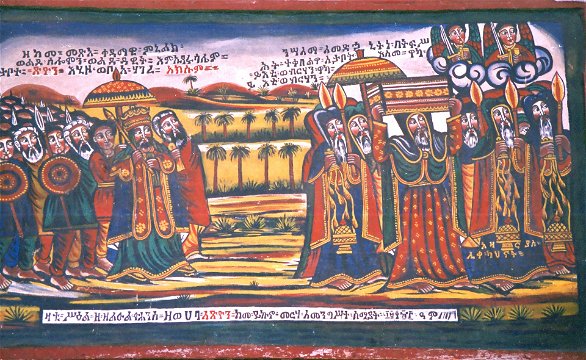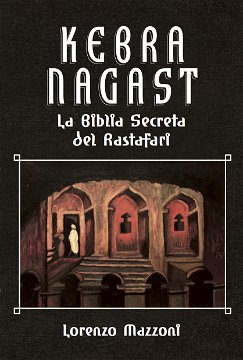Discover why Ethiopia is the perfect destination for E-Bike tours. Learn about safety, terrain, and what makes E-Biking in Ethiopia a unique and eco-friendly adventure with SimienEcoTours. Ethiopia is a land of awe-inspiring landscapes, vibrant cultures, and ancient history. As interest in eco-friendly travel grows, many adventurous souls are now turning to E-Bike tours as a unique and sustainable way to explore this extraordinary country. But one question often arises: Is Ethiopia...
Kebra Nagast and Rastafarianism explained by Lorenzo

Our employee Lorenzo Mazzoni, born in Italy and expert in Ethiopian history, religion, music and culture, graduated with a thesis on the Rastafari movement and reggae music, later published under the title “Rasta Marley, the roots of Reggae” (Stampalternativa, Viterbo 2009). In 2011 he started travelling to Ethiopia, and in 2018 he began working there, first as a language teacher, and then as a tour guide and sales manager for SimienEcoTours. His connection to Ethiopian history, religion and music continued to stay very strong, so who better that Lorenzo can explain the real Rastafari movement?
The Kebra Nagast, which in the Ethiopian language (originally Ge'ez and later Amharic) means "The Glory of Kings", is an ancient Ethiopian book of the orthodox Christian Tewahedo tradition: an early draft of this text, considered sacred in Ethiopia for over a thousand years, was compiled in the Tigray region between the 4th and 6th centuries AD, but the complete version dates back to the early 14th century AD.
The book contains the detailed narrative about the origins of the Solomonic dynasty of Ethiopian emperors, starting with Adam and Eve and ending with Negus Gabra Maskal, under whose reign the text was finally transcribed, compiled and disseminated for the first time, as a pillar of the tradition and epic of Ethiopia. As the scholar Edward Ullendorff, a British professor of Semitic languages and an expert on Ethiopian history, put it: “The Kebra Nagast is not just a literary work, but a gigantic fusion of legendary cycles and, like the Old Testament for Jews or the Koran for Muslims, represents an account of Ethiopia's national tradition and religious sentiments”.
In fact, the Kebra Nagast recounts in great detail the meeting between the Queen of Sheba and King Solomon, and sets out in a clear and exciting manner the events surrounding the son of the two rulers, named Menelik, as well as the subsequent transfer of the Ark of the Covenant from the kingdom of Israel to the one of Ethiopia: this event officially marks the moment of the religious conversion of the Ethiopian people from the African cult of the sun to the monotheistic cult of the God of Israel, Yhwh (Yahweh - or Jehovah). The narrated events have not only a religious but also a historical significance, as they explain the displacement of the Solomonic dynasty from Jerusalem to Ethiopia, symbolised by the transfer of the Ark containing the Decalogue at the end of the 10th century BC.
In this way, the divine Ark from his father Solomon, King of Israel, passed into the hands of his eldest son, the fruit of his relationship with Makeda (Queen of Sheba), called Bayna-Lehekem (i.e. 'Son of the Wise') and subsequently crowned the first Emperor of Ethiopia with the title David II (or Menyelek) at the end of the 10th century BC, better known as Menelik I. Thus, along with the Ark, the theological monarchy, biblical lineage and divinely inspired wisdom were also displaced in Ethiopia: this is revealed in the Kebra Nagast, a compilation of Hebrew texts from the Old Testament, along with the Christian Gospels, sacred volumes of the Ethiopian tradition, and even extracts from the Qur'an, along with Arabic legends and other texts currently considered apocryphal.
The book can thus be defined as an original reinterpretation of ancient, mainly biblical writings, and among the many events narrated it documents above all that: "Once the whole world consisted of three kingdoms, led by three kings, the three sons of Solomon"; and that there was a long period when: "The kings of the whole world were descended from Shem". Above all, the Kebra Nagast connects the Solomonic lineage (and thus of David, Moses, Abraham and backwards to Adam) to the Ethiopian royal dynasty, unbroken until the modern and last Negus of Ethiopia Ras Tafari Makonnen crowned in 1930 as Haile Selassie I (in Amharic language 'Power of the Holy Trinity'), and thus endorses the possibility that the Ark of the Covenant can still be found in Ethiopia, as the Ethiopian Tewahedo Orthodox Church has also maintained for centuries. Ras Tafari Makonnen, the original name plus title of emperor Haile Selassie, later gave also the name to the Rastafari movement.
This is exactly the meaning of The Glory of Kings: the continuity of the dynasty of the Kings of Israel with the Kings of Ethiopia, represented precisely by the Ark of the Covenant, Tabernacle of the Law of Yahweh. This text is undoubtedly rich in cultural, philological, anthropological and especially biblical interest, fascinating archaeological questions, and ancient prophecies.
From Ge'ez, Amharic and Arabic (between the 13th and 14th centuries AD), to English, French, Portuguese and German (from the 16th century onwards), the Kebra Nagast has been transcribed, translated and published at different times and places, but never completely: a first complete translation had to wait until 1922, when it was finally printed in full in the UK, with its 117 chapters translated into English by Sir E. A. Wallis Budge, Professor of Jewish History at Cambridge and Head of the Department of Egyptian Antiquities and Assyriology at the British Museum.
As Professor Budge argues, the ancient text of the Kebra Nagast is in fact the result of various transcriptions, mainly during the first four centuries of the Christian era, of Jewish, Christian and Muslim sacred scriptures. The basis of the book is the Old Testament, complete, however, with important sections omitted from the Jerusalem Bible, but present in the traditional texts of Ethiopian Tewahedo Orthodoxy, along with rabbinic writings and traditional legends (Ethiopian, Coptic and ancient Egyptian), with commentaries extracted from the Qur'an and other stories from the Arabic tradition (especially from Palestine and Syria, e.g. 'The Book of the Bee'), as well as Christian books currently considered apocryphal, such as: "The Book of Adam and Eve", "Kufale", "St Peter's Instructions to his Disciple Clement", "The Life of Anne, Mother of the Virgin Mary", "The Book of the Pearl" and "The Ascension of Isaiah".
A book like a journey one could say, from Ethiopia to Jamaica, to reach the spiritual cult born in the Caribbean thanks to the dream of a black king (Haile Selassie), of a free and powerful Africa, and of an Ethiopia heir to the ancient Kingdom of Israel: it is the movement known as Rastafarianism, a symbol of emancipation from slavery. Promoted by people like Marcus Mosiah Garvey, founder at the beginning of the 20th century of the liberation movement called UNIA (Universal Negro Improvement Association), and more recently by the singer Bob Marley and other reggae music groups, the Rastafari movement, which follows the spatiotemporal path of the Ark of the Covenant to the last Negus of Ethiopia, has been gathering more and more sympathisers, followers and believers worldwide for many years now. The sacred text of this religious culture and philosophy of life is indeed the Kebra Nagast, and considering that Rastafari believers have long since spread outside the Caribbean, to all continents, it was high time that their Bible was published and disseminated worldwide.
Our guide and sales manager in Europe, Lorenzo Mazzoni, was the first to translate and publish the book in both Italian (Shake editore, Milan 2023) and Spanish (Kdp, 2019) in editions complete with original introductions and prefaces, with numerous detailed notes and also two appendices, the travel diaries he wrote after his numerous trips to Jamaica and Ethiopia.
It should be noted that all the editions of the Kebra Nagast in circulation in different languages are enjoying considerable success with the public. This wide interest among readers confirms expectations: it is a truly important text, today as yesterday. A sacred, timeless book. Paraphrasing Luke (12:3): "Whatever you said in the darkness will be heard in the light of day".
Finally, also thanks to the book Kebra Nagast, Ethiopia can stretch out its hands to God.
P.S. Beside publishing his theses under the title “Rasta Marley, the roots of Reggae” (Stampalternativa, Viterbo 2009, in recent years Lorenzo has published many books on the history of Ethiopia and the Rastafari movement, including "Kebra Nagast, the Secret Bible of the Rastafari" (also Spanish translation) and the book "Haile Selassie I: Selected Speeches, 1930-1973". In 2020 his fiction book "Fifteen Stories of Ethiopia" was released, followed in 2021 by the volume "Thus Spoke Ras Tafari - Selected Speeches of Haile Selassie", and in 2023 by the new edition of the book "Kebra Nagast, the Rastafari Bible."
Further Reading
After successfully overcoming 2 crises like Covid-19 and the conflict in the Northern part of the country, we organized again the annual training for our internal staff and freelance tourism professionals. We found it important to bring together all these professionals after such long time - to reconnect, spend some valuable time together, improve our knowledge and fill the small gaps that this long time with few job opportunities inevitably created.
Yes, we Ethiopians and Ethiopia-lovers are all victims of the Tigray conflict, it really affected the whole country and its people which all lost unconditionally. There is no beauty from war. The unconditional love, hospitality, and kindness of the Tigray people, the beautiful landscapes, the breath-taking views from every mountain, the spiritually rich churches and monasteries – it all planted roots deep in our hearts. Our absence from this region is just...















Share This Post